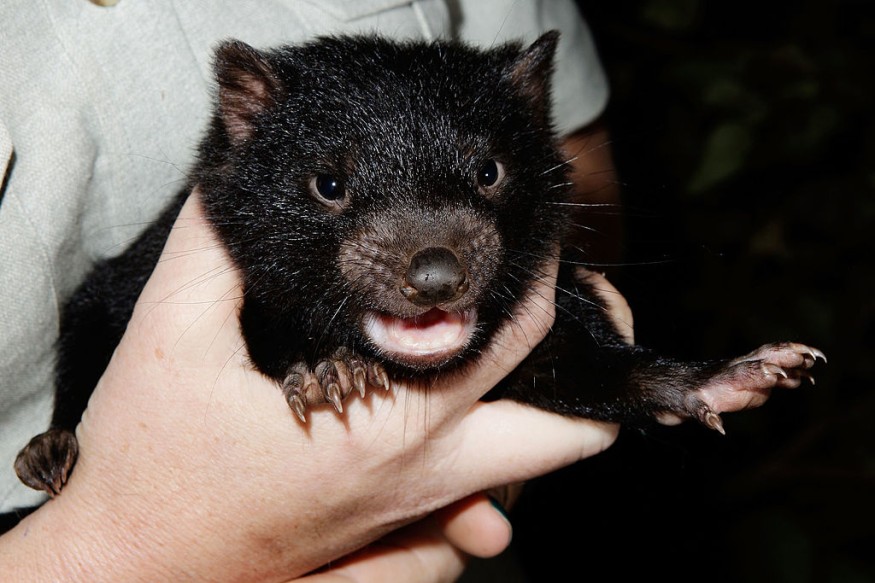Tasmanian devil tumor disease or Tasmanian devil facial tumor disease or DFDT has helped lower the carnivorous marsupial populations by approximately up to 90 percent in some areas.
A recent report from News.Com.Au said horrifying pictures of numerous Tasmanian devils killed on a road in the state's far northwest had stimulated urgent calls for action to save the so-called iconic creature.
According to locals, over 30 devils have died on Woolnorth Road since 2021, which includes 10 during the last five days.
Woolnorth is considered one of the healthy Tasmanian devil populations' strongholds in the state. Peter Whish-Wilson, a Tasmanian Greens senator, said the reports of declining devils along Woolnorth Road are worrying.

Roadkill Easing Measures
The senator added, if left unchecked, this mortality rate would be catastrophic for the population of the Tasmanian devils that is free from DFTD, which the University of Cambridge describes as transmissible cancer affecting Tasmanian devils.
He also said roadkill easing measures, including lower limits in speed, signage, and fencing, need to be implemented.
The said horrific pictures exhibit the dead devils in graphic details, including some blood and intestine splattered on the road.
Moreover, Whish-Wilson called on the federal government to commit to providing financial backing to devil research in the area and more financial support for the Save the Tasmanian Devil Program.
Initiatives to Save Tasmanian Devils
Clearly, funding needs to be reinstated to fully understand how best to shield the said animal species, not only from this Tasmanian devil tumor disease but also from suffering such horrifying deaths on the roads.
The government official added, DFTD underscored the Tasmanian devil's importance to the ecological and cultural landscape of Tasmania.
Essentially, the Save the Tasmanian Devil Program, an initiative of Australia and Tasmania's governments, was instituted in the early 2000s as a response to the danger of extinction of the Tasmanian Devil because of DFTD.
The Department of Primary Industries, Parks, Water, and the Environment, or DPIPWE of Tasmania, which handles the program said, knew the reports of devil roadkill this year at Woolnorth.
'Devil Roadkill'
In a statement, a spokeswoman said all devil roadkill is of concern. She added, program staff has gotten in touch with the local council, the primary road owner, to guarantee that they knew the issue and to give recommendations if necessary.
According to data and from the DPIPWE on roadkill, a recurring yearly spike in devils killed on roads during the summer season in Tasmania.
Such a pattern is believed to occur because juvenile devils are dispersing from the dens of their mothers at this particular time of year.
At times, they also use roads to travel, explained the spokeswoman. The federal environment department, as well as the minister, have been contacted to request comments.
Incidentally, MSN reported that the stretch of road where the devils were killed is located adjacent to Van Dairy farms.
Moon Lake Investments, a Chinese-owned firm, reportedly pledged to help protect the local Tasmanian devil's population before the purchase in 2016 of the former Van Diemen's Land Company.
The Tasmanian Dairy Industry Authority is currently investigating the company over issues related to such occurrences.
A related report on roadkill of Tasmanian devils is shown on ABC Australia's YouTube video below:
RELATED ARTICLE : Australian Researchers Aim For Global Conservative Policies to Protect Endangered Marine Species
Check out more news and information on Animals on Science Times.
© 2025 ScienceTimes.com All rights reserved. Do not reproduce without permission. The window to the world of Science Times.











